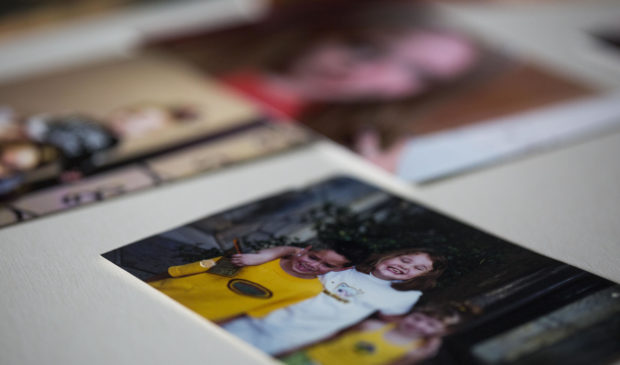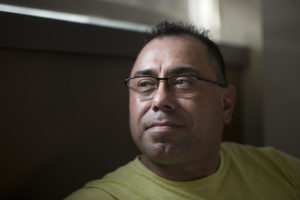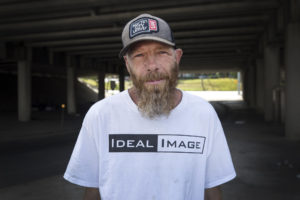Newsletter Signup
The Austin Monitor thanks its sponsors. Become one.
Most Popular Stories
- Austin Resource Recovery to formally amend cart collection rules
- Austin ISD gets $41 million from the Education Department. What happens if the agency closes?
- Council approves grant award to replace Barton Springs Road Bridge
- Firefighters, city reach agreement on retirement fund
- Rite of spring: Dog-killing algae makes an early appearance in Austin waterways
-
Discover News By District

Housing Austin’s homeless will reduce road deaths, but that will require a big investment
Thursday, May 17, 2018 by Audrey McGlinchy, KUT
Mike Villegas learned his oldest child had died on Christmas Eve 2016.
Villegas said he was doing work around the house with his 12-year-old son. When he went out to the front yard, he noticed a police car parked outside the house.
“I knew immediately that this was not going to be good,” said Villegas.
Officers informed him that his 25-year-old daughter, Sarah Jane Villegas, had been hit by several drivers and died the night before. Sarah Jane, who struggled with substance abuse and was living on the street at the time of her death, had a strained relationship with her dad.
According to Villegas, she had been living with her mom in Corpus Christi until a couple of years before her death.

Mike Villegas’ daughter, Sarah Jane, was hit and killed by multiple drivers in 2016 while she was temporarily homeless. While roughly a third of all deaths on Austin roads are pedestrians, a third of those deaths are people experiencing homelessness. Credit Gabriel C. Pérez / KUT
“I was in and out of her life a lot,” said Villegas, who works in food services at Lake Travis Independent School District. “Then there would be times where she would need help or something, and she would call, as she got older, and I would help her.”
Villegas said he bought Sarah Jane a hotel room in early December, and she appeared to be working toward getting clean.
“She was trying to take care of herself, doing the best she could,” he said.
According to the police report, Sarah Jane tried to cross Loop 360 just after 10 p.m. on Dec. 23, 2016. It was raining. Sarah was hit by several drivers, including a fire truck. A passenger in one of the cars that hit Sarah, who spoke on the condition of anonymity, said she came “out of nowhere.”
When asked if he blames anyone for Sarah’s death, Villegas hesitated.
“I would probably say myself. I mean, I would say if I was a better dad in her time of need,” he said. “I also blame her for being where she was doing what she was doing, (especially) after a lot of people really loved her.”
In May 2016, City Council members approved the Vision Zero Action Plan, which outlines an aggressive goal of reducing traffic deaths and serious injuries on Austin roads to zero by 2025. Since then, fatal crashes have dropped slightly, but pedestrians still make up roughly a third of the deaths.
Of those deaths, people experiencing homelessness account for one in three.
“These people are often displaced and forced to live in places not meant for human habitation such as underpasses and along roadways,” said Karen Dorrier, program manager for Austin-Travis County Integral Care’s Homelessness Outreach Street Team.
And being on the streets most of the day can up your chances of being hit.
On a Thursday morning in Austin, Theron Russell stood at the corner of Interstate 35 Frontage Road and 15th Street. He held up a sign that read “Anything Helps” to passing cars.
Russell said he’s been hit twice by cars at that intersection.

Theron Russell says he’s been hit twice at the corner of 15th Street and I-35. Credit: Julia Reihs / KUT
“One car bumped the other one and it fishtailed up onto the curb,” he said. “And when they’re doing 40 miles an hour, you can’t move. Then another car hit another car, and I got hit with debris. And again, when they’re doing 40, you can’t get out the way.”
“It’s real dangerous out here,” said Russell.
According to the most recent numbers from the Austin Police Department, roughly one-third of pedestrians who die on Austin roads are experiencing homelessness at the time. In 2015, 10 people living on the streets were hit and killed by drivers. In 2016, that number rose to 11 – accounting for nearly 40 percent of pedestrian traffic deaths that year.
APD does not have numbers for 2017 or 2018. But of the five police reports of pedestrian deaths in 2017 KUT was able to get, two of those were people living on the streets.
When the city’s Vision Zero plan passed in 2016, the proposed solution for preventing homeless death in traffic was pretty simple: house those who are unhoused. But anti-homelessness advocates KUT spoke to for this story said a significant uptick in resources is needed to reach this goal.
“You know, we’ve done a whole lot right,” said Ann Howard, the executive director of ECHO, or the Ending Community Homelessness Coalition. ECHO recently released the results from its 2018 Point in Time Count, which attempts to count the number of people experiencing homelessness on any given night in Austin. The numbers represent a roughly 5 percent uptick in Austin’s homeless population.
“But we haven’t seen any surge in resources to be able to really change the end game here to make the impact that the community I think is looking for,” said Howard.
There have been several initiatives. In 2016, APD took part in a pilot to ramp up outreach to people experiencing homelessness downtown and on West Campus. Recently, the Texas Department of Transportation started a campaign to promote pedestrian safety along I-35, where many homeless people are hit and killed, by handing out reflective bags and partnering with social services organizations to offer help.
Regardless, Howard’s comment about needing to up efforts has made its way to the desks of local elected officials.
“We absolutely need more resources,” said Mayor Pro Tem Kathie Tovo.
Last month, Council members approved an Action Plan to End Homelessness, a guide for the future allocation of resources. But the funding mechanism – which would include private dollars and a potential return on investment – is still being worked out.
Top Photo: Sarah Jane Villegas was struck and killed by a vehicle near South Capital of Texas Highway in 2016. Gabriel C. Pérez/KUT
This story was produced as part of the Austin Monitor’s reporting partnership with KUT. Its headline has been changed since publication.
The Austin Monitor’s work is made possible by donations from the community. Though our reporting covers donors from time to time, we are careful to keep business and editorial efforts separate while maintaining transparency. A complete list of donors is available here, and our code of ethics is explained here.
You're a community leader
And we’re honored you look to us for serious, in-depth news. You know a strong community needs local and dedicated watchdog reporting. We’re here for you and that won’t change. Now will you take the powerful next step and support our nonprofit news organization?



